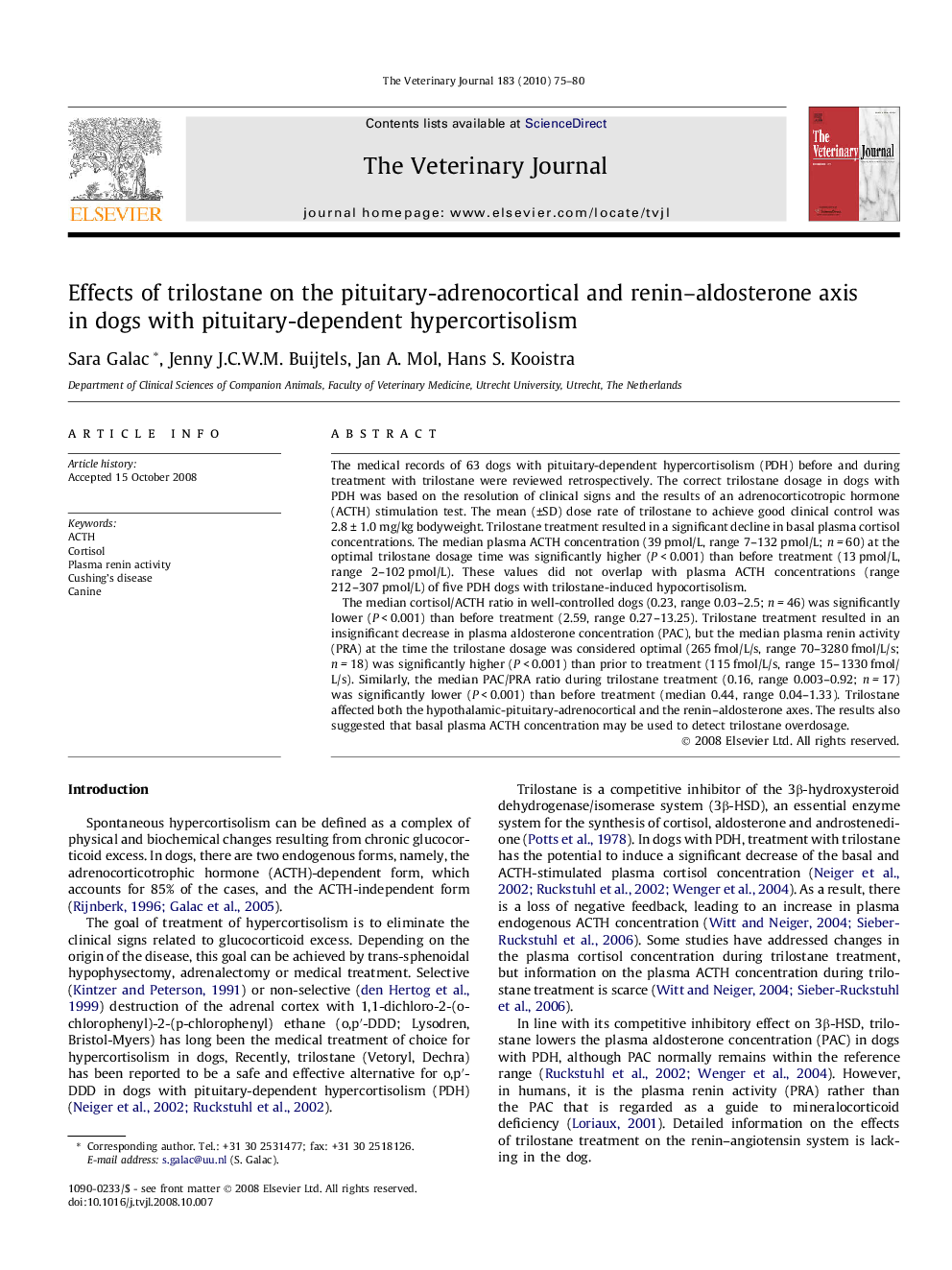| کد مقاله | کد نشریه | سال انتشار | مقاله انگلیسی | نسخه تمام متن |
|---|---|---|---|---|
| 2465295 | 1111824 | 2010 | 6 صفحه PDF | دانلود رایگان |

The medical records of 63 dogs with pituitary-dependent hypercortisolism (PDH) before and during treatment with trilostane were reviewed retrospectively. The correct trilostane dosage in dogs with PDH was based on the resolution of clinical signs and the results of an adrenocorticotropic hormone (ACTH) stimulation test. The mean (±SD) dose rate of trilostane to achieve good clinical control was 2.8 ± 1.0 mg/kg bodyweight. Trilostane treatment resulted in a significant decline in basal plasma cortisol concentrations. The median plasma ACTH concentration (39 pmol/L, range 7–132 pmol/L; n = 60) at the optimal trilostane dosage time was significantly higher (P < 0.001) than before treatment (13 pmol/L, range 2–102 pmol/L). These values did not overlap with plasma ACTH concentrations (range 212–307 pmol/L) of five PDH dogs with trilostane-induced hypocortisolism.The median cortisol/ACTH ratio in well-controlled dogs (0.23, range 0.03–2.5; n = 46) was significantly lower (P < 0.001) than before treatment (2.59, range 0.27–13.25). Trilostane treatment resulted in an insignificant decrease in plasma aldosterone concentration (PAC), but the median plasma renin activity (PRA) at the time the trilostane dosage was considered optimal (265 fmol/L/s, range 70–3280 fmol/L/s; n = 18) was significantly higher (P < 0.001) than prior to treatment (115 fmol/L/s, range 15–1330 fmol/L/s). Similarly, the median PAC/PRA ratio during trilostane treatment (0.16, range 0.003–0.92; n = 17) was significantly lower (P < 0.001) than before treatment (median 0.44, range 0.04–1.33). Trilostane affected both the hypothalamic-pituitary-adrenocortical and the renin–aldosterone axes. The results also suggested that basal plasma ACTH concentration may be used to detect trilostane overdosage.
Journal: The Veterinary Journal - Volume 183, Issue 1, January 2010, Pages 75–80